Lithium Polymer and Lithium-Ion Mobile Phone Batteries
The history of Mobile Phone Batteries goes back to the very first cell phone, which was used by the Swedish Police Department in 1946. Over time, advances in technology and materials have led to the development of modern batteries that are smaller, lighter, more efficient, and longer-lasting.
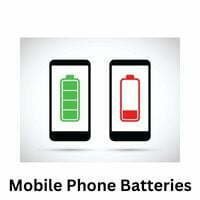
Mobile phones or smartphones have become one the most necessary and important parts of our life and battery plays a main role in mobile phones without battery there will be no use for mobile. Most modern mobile devices, including phones, use lithium-ion batteries, which consist of two main parts: a pair of electrodes and an electrolyte solution.
Lithium-ion Mobile Phone Batteries are popular because they are lightweight, have a high energy density, and are rechargeable. There are two main types of lithium-ion batteries used in modern cell phones: Lithium Polymer and Lithium Ion. Lithium Polymer batteries offer high energy density, are lightweight, and have a low profile, making them suitable for use in phones and other small devices. On the other hand, Lithium Ion batteries are commonly used in larger devices and have higher energy density compared to Lithium Polymer batteries.
There are several types of mobile/smartphone batteries that are widely used in many phones. Some of the main types of batteries are explained below:
Lithium-ion Ion Battery:
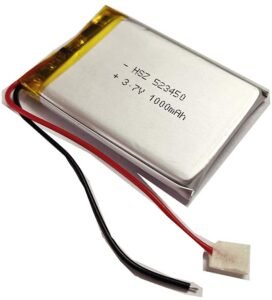
A lithium-ion battery, also known as a Li-ion battery, is a type of rechargeable battery that is widely used in electronic devices and transportation applications. Its electrochemistry relies on the use of lithium ions as a key component during the discharge cycle. Lithium-ion Mobile Phone Batteries have become increasingly popular due to their high energy density, long cycle life, and low self-discharge rate.
They are used to power a wide range of devices, including smartphones, laptops, cell phones, and electric cars. The energy in a lithium-ion battery is stored in its electrodes, which are made of lithium-ion compounds. During the charging process, lithium ions move from the positive electrode to the negative electrode, where they are stored.
When the battery is used, the process is reversed, and the lithium ions move from the negative electrode to the positive electrode, generating energy in the process. One of the *key advantages of lithium-ion batteries* is their high energy density, which means it is most powerful and used at high voltage.
Advantages of the Lithium-ion Mobile Phone Batteries:
- High energy density: This means that they can store a lot of energy in a
lightweight and small space. - Longer lifespan: Lithium-ion batteries have a longer lifespan and can withstand multiple charge and discharge cycles without losing capacity.
- No memory effect: which means they do not need to be fully discharged before recharging.
- Wide range of applications: Wide range of applications from mobile devices to electric vehicles.
- Lightweight: they are also much lighter and more compact than other types of rechargeable batteries.
- No need for a special charger: Most lithium-ion batteries can be charged using a normal standard USB cable.
Disadvantages of Lithium-ion Mobile Phone Batteries:
- Sensitive to high temperatures: One of the main drawbacks of Lithium-ion batteries is that they are sensitive to high temperatures and can be damaged or even explode if subjected to extreme heat.
- Fragile: Lithium-ion batteries are also fragile and require a protection circuit to maintain safe operation, which can add to their cost and complexity.
- Expensive: More expensive than some other types of rechargeable batteries, such as nickel-cadmium or nickel-metal hydride batteries.
- Electrolyte: Electrolytes can degrade over time, reducing the battery’s capacity and lifespan.
Nickel Metal Hydride (NiMH) Mobile Phone Batteries:
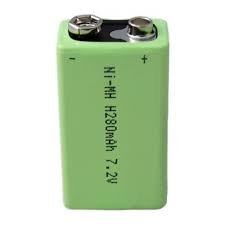
Nickel Metal Hydride (NiMH) batteries are rechargeable batteries that have been used in mobile phones in the past, however, they have largely been replaced by Lithium-ion batteries. NiMH batteries are made of metal hydride electrodes and nickel oxide electrodes, which are immersed in a potassium hydroxide electrolyte.
Nickel Metal Hydride has a higher capacity than NiCd batteries, which were the previous generation of rechargeable batteries used in mobile phones. This means that they can store more energy and last longer between charges. However, their capacity is still lower than that of Lithium-ion batteries.
NiMH batteries have a lower memory effect than NiCd batteries, which means they do not need to be fully discharged before recharging. However, they still have some memory effect, which means that if they are repeatedly recharged before being fully discharged, their capacity will gradually decrease.
These NiMH batteries have a higher self-discharge rate than Lithium-ion batteries, which means that they will lose charge over time even if they are not being used. This can be a problem if you have a spare Nickel Metal Hydride battery that you want to keep charged for emergencies.
Nickel Metal Hydride can be charged using a standard charger that is designed for NiMH batteries. Overall, NiMH batteries were once popular for use in mobile phones due to their *higher capacity* than NiCd batteries, but they have largely been replaced by Lithium-ion batteries, which have a higher capacity, *lower self-discharge rate*, and lower memory effect.
Advantages of Nickel Metal Hydride (NiMH) Mobile Phone Batteries:
- Higher capacity: Nickel Metal Hydride batteries have a higher capacity than their predecessor, Nickel-Cadmium (NiCd) batteries, which means they can store more energy and *last longer* between charges.
- Lower toxicity: Nickel Metal Hydride batteries are less toxic than NiCd batteries and are therefore considered more *environmentally friendly*. They do not contain cadmium, which is a toxic heavy metal.
- No memory effect: NiMH batteries have less of a memory effect than NiCd batteries. This means that they do not need to be fully discharged before recharging, which can make them more convenient to use.
- Cost-effective: NiMH batteries are generally less expensive than Lithium-ion batteries, which are currently the most popular type of rechargeable battery used in mobile, and smartphones.
Disadvantages of Nickel Metal Hydride (NiMH) Mobile Phone Batteries:
- Lower energy density: NiMH batteries have a lower energy density than Lithium-ion batteries. This means that they store less energy per unit of weight and volume, which can make them bulkier and heavier.
- Shorter lifespan: NiMH batteries have a shorter lifespan than Lithium-ion batteries. They typically last for 2-3 years before needing to be replaced, whereas Lithium-ion batteries can last for 3-5 years.
- Limited charging options: Nickel Metal Hydride batteries require a specific type of charger that is designed for NiMH batteries. If you try to charge them with the wrong type of charger, it can damage the battery or cause it to overheat.
Nickel Cadmium (NiCd) Mobile Phone Batteries:
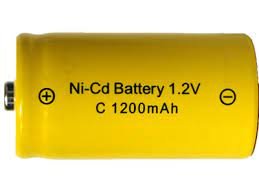
Nickel Cadmium batteries were once commonly used in mobile phones as rechargeable batteries. They were the first type of rechargeable battery widely used in portable electronic devices. NiCd batteries are made of cadmium and nickel electrodes, which are immersed in a potassium hydroxide electrolyte.
NiCd batteries have a relatively low energy density compared to more modern battery
technologies such as Lithium-ion, but they were a significant improvement over disposable batteries because they can be recharged multiple times.
However, NiCd batteries are now less commonly used in mobile phones because they are less environmentally friendly than newer battery technologies, and they have a higher memory effect than more modern batteries.
Advantages of Nickel Cadmium (NiCd) Mobile Phone Batteries:
- Relatively low cost: NiCd batteries are less expensive.
- Robust: NiCd batteries are more resistant to damage from overcharging and high
temperatures compared to other battery types. - Good performance in extreme temperatures: NiCd batteries are able to operate in
extreme temperatures, both hot and cold, making them suitable for use in harsh
environments.
Disadvantages of Nickel Cadmium (NiCd) Mobile Phone Batteries:
- Memory effect: NiCd batteries are prone to a memory effect, which means that if they are not fully discharged before being recharged, their capacity can gradually decrease over time.
- Environmental concerns: NiCd batteries contain cadmium, which is a toxic heavy metal that can have negative environmental impacts if not disposed of properly.
- Low energy density: NiCd batteries have a lower energy density compared to more modern battery technologies such as Lithium-ion, which means they store less energy per unit of weight and volume.
- Self-discharge: NiCd batteries have a higher self-discharge rate compared to more modern battery technologies, which means they can lose their charge even when not in use, making them less suitable for devices that require long-term standby power.
Lithium Polymer Mobile Phone Batteries:
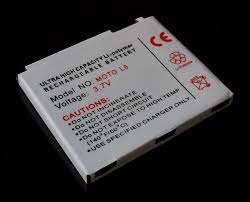
Lithium polymer batteries are a type of rechargeable battery that is commonly used in mobile phones due to their high energy density, lightweight, and relatively low cost. They are made of thin, flexible plastic-like sheets that can be easily molded into various shapes, making them well-suited for use in small, compact devices like mobile phones or smartphones.
Lithium polymer batteries use a lithium-ion electrolyte to store and release energy. The electrolyte is a liquid or gel-like substance that contains ions, which are charged particles that carry electricity. When the battery is charged, the ions move from the positive electrode to the negative electrode, storing energy. When the battery is discharged, the ions move back to the positive electrode, releasing energy.
Advantages of Lithium Polymer Mobile Phone Batteries:
- High energy density: meaning they can store a lot of energy in a small, lightweight package.
- Low self-discharge rate: allowing them to hold their charge for longer periods of time.
- Flexible and customizable shape: making them suitable for use in small, compact devices.
- Long cycle life: meaning they can be charged and discharged many times without losing much capacity.
- Low cost: Generally lower cost than other high-energy-density batteries such as lithium-ion or nickel-metal hydride batteries.
Disadvantages of Li-Po Mobile Phone Batteries:
- Temperature: Sensitive to high temperatures and can degrade or even catch fire if
overheated. - Charger: Require a special charger to prevent overcharging or over-discharging, which can damage the battery or pose a safety risk.
- Limited lifespan: with a finite number of charge and discharge cycles before they need to be replaced.
- Voltage: voltage drops rapidly when the battery is nearing depletion, making it difficult to accurately gauge the remaining battery life.
- Damaged: Can be damaged if dropped or punctured, potentially causing a safety hazard.
Conclusion:
Nickel Cadmium (NiCad) batteries are a type of rechargeable battery that offers high durability, and reliability, and can withstand high discharge rates. They are widely used in high-drain applications such as power tools and emergency lighting systems. However, they have a lower energy density than other rechargeable batteries such as lithium-ion and nickel-metal hydride batteries. NiCad batteries also contain toxic materials and suffer from memory effects if not properly charged and discharged. While still in use, NiCad batteries are being phased out in favor of more environmentally friendly and efficient battery technologies
FAQs:
Q.1) How long does a LiPo battery last?
Ans: The lifespan of a LiPo (Lithium Polymer) battery depends on several factors, including how frequently it is used, how it is charged and discharged, and how it is stored. Generally, a well-maintained LiPo battery can last anywhere from 300 to 500 cycles, meaning it can be charged and discharged between 300 and 500 times before its capacity begins to degrade significantly.
Q.2) What voltage is safe for a LiPo battery?
Ans: The safe and usable voltage for lithium polymer batteries is 3.2v to 4.2v. Lower than 3.2v may permanently cause damage to batteries and higher than 4.2v can increase the risk of the battery exploding.
Q.3) What temperature should NiMH be stored at?
Ans: NiMH (Nickel-metal hydride) batteries should be stored at room temperature, ideally between *20°C to 25°C (68°F to 77°F)*. It is important to avoid storing NiMH batteries in extreme temperatures, such as high heat or freezing conditions, as this can damage the battery and reduce its lifespan.
Q.4) What causes NiMH batteries to fail?
Ans: Some common causes of NiMH battery failure include overcharging, over-discharging, exposure to high temperatures, physical damage, and age-related wear and tear.
Q.5) Can NiMH batteries leak?
Ans: Yes, NiMH (Nickel-metal hydride) batteries can *leak* if they are damaged or if they are exposed to extreme temperatures.
Q.6) What is one of the main problems with lithium-ion batteries?
Ans: One of the main problems with lithium-ion batteries is their potential to *catch fire* or explode if they are damaged or exposed to high temperatures.
Q.7) What are the two biggest drawbacks of Nickel Cadmium batteries?
Ans: The two biggest drawbacks of Nickel Cadmium (NiCd) batteries are the “memory effect,” where the battery can lose capacity if it is not fully discharged before recharging, and the use of *toxic cadmium*, which is harmful to the environment and human health, in the battery’s construction.
Thank You For Reading On Our Blog, Visit Again To Keep Yourself One Step Ahead in Getting Mobile Updates.
READ ABOUT THESE MOBILES TOO…
Google Pixel 7A Review | Vivo V27 Pro | Realme 10 Pro Plus | Realme Narzo 50i Prime
Buy These Mobiles at Reasonable Price:
iQOO 7 5G | iQOO Neo 6 5G | iQOO 9 SE 5G | (Renewed) iQOO 7 Legend 5G
3 thoughts on “4 Types of Mobile Phone Batteries”